Too often, lean practitioners begin value-stream mapping without fully understanding what it is, why it is a vital part of a lean transformation — and even some basics as to what information is gathered and presented with the practice. So, here is a primer on what you need to know to leverage VSM to chart your lean journey.
What is Value-Stream Mapping?
Value-stream mapping (VSM) is a fundamental lean practice that involves diagraming a value stream, which includes all the actions (value-creating and nonvalue-creating) needed to move a product or service from raw material to the arms of the customer, including the material and information flow. Lean practitioners use the process and the resulting map to identify and eliminate waste.
Toyota developed the practice and tool (which it calls a material and information flow diagram) as a critical part of the Toyota Production System.
Value-stream mapping typically begins with a team creating a current state map by capturing the actual condition of a value stream’s material and information flow.
Subsequently, the team draws a future state map, a target image of how the material and information should flow through the value stream. Repeatedly doing the value-stream mapping process is the simplest and best way to teach yourself and your colleagues how to see value-adding versus nonvalue-adding process elements.
Most commonly used in lean manufacturing, value-stream mapping has been proven effective in any industry.
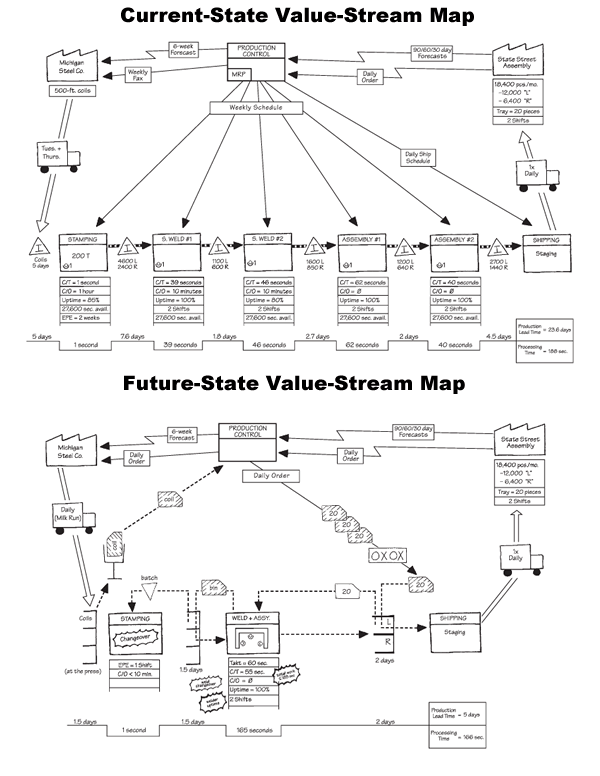
Why Value-Stream Mapping is an Essential Lean Practice
The main intention of current state mapping is to try to understand the dock-to-dock, or start-to-finish, flow, not to draw a perfectly accurate depiction. The primary reason for future state mapping is to visualize the vision of the improved value stream. So value stream mapping:
- helps you visualize more than just the single-process level, enabling you to see the flow of work across all the processes.
- helps you see more than waste in your value stream, including the sources of waste.
- provides a common language for talking about a process.
- makes the decisions about flow apparent so that you can discuss them. Otherwise, many decisions happen just by default.
- forms the basis of an implementation plan, a blueprint for improvement, helping you design how the whole “door-to-door” flow should operate. Imagine trying to build a house without a blueprint!
- shows the linkage between material flow and information flow. No other tool does this.
Understanding the 4 Value-Stream Map Zones
Generally, value-stream maps show specific types of information in a standardized way. So, the information flow is in the first row or line. The process steps are in the second, with process data boxes (metrics) immediately below each step. And the timeline and summary statistics – the value stream’s key process indicator (KPI) data at the bottom.
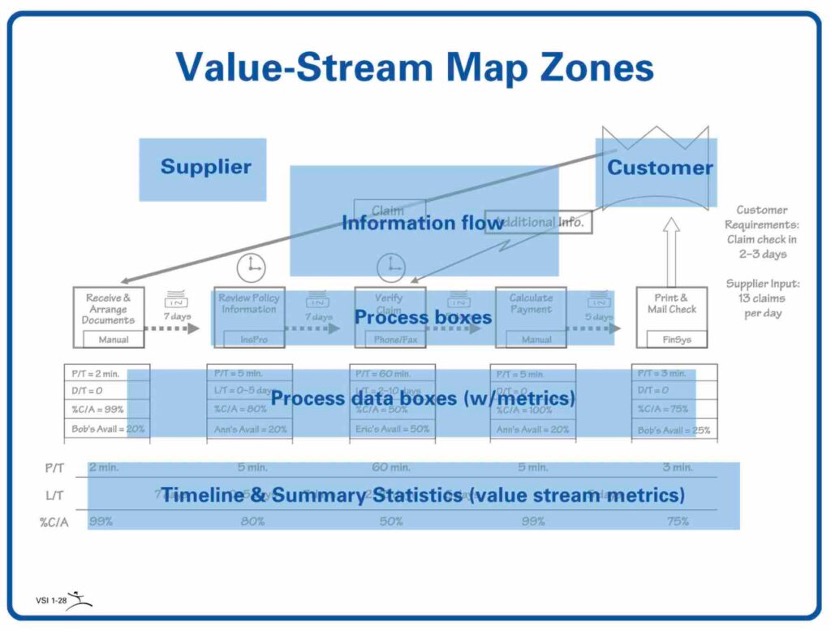
Information flow tells each process what to make or do next and when to do it.
Process boxes depict the steps of product or service delivery in a value stream. Because drawing a box for every process step would make the map unwieldy, use the process box to indicate one area of material flow. The process box stops wherever processes are disconnected, stopping the material flow.
Process data boxes detail essential information and metrics about each step, including:
- Cycle Time (C/T) or Processing Time (P/T) – the time an operator requires to complete all the work elements before repeating them.
- DownTime (D/T) – production time lost due to planned or unplanned stoppages.
- Uptime – the percent of the time that a machine is available for production
- Changeover time (C/O) – the time required to set up a machine to make a different product or part number.
- % Complete and accurate (%C/A) – the percent of product completed with perfect quality in a process step.
- Availability – the time a process operates over a single shift, often measured in seconds.
Timeline & Summary Statistics (Value-Stream Metrics) record a summary of the metrics.
- Lead time (L/T) – the time it takes one piece to move through a process or a value stream from start to finish.
How Value-Stream Mapping Differs from Process Mapping
When you want to “see” and improve the big picture — all the process steps needed to deliver a product or service from customer order or raw materials to delivery, value-stream mapping helps prioritize where efforts will yield overall improvement. Alternatively, when you want to improve a specific process or operation within the value stream, process mapping enables a detailed look at each step, allowing you to determine specific, targeted improvements.In other words, value-stream mapping is about improving the entire value stream, not just the parts, while process mapping is about improving a specific process within a value stream.
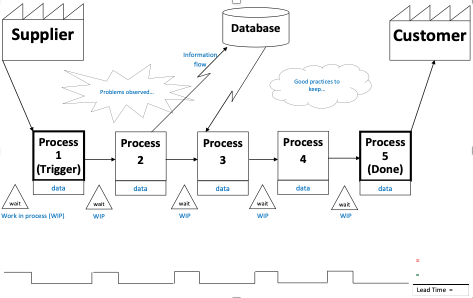
Value Stream Mapping (VSM)
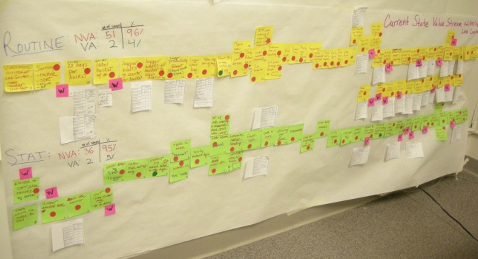
Process Mapping
What
- Shows the ‘big picture’
- Visualizes system flow from the customer’s perspective
- Depicts how all processes are linked
- Includes both the material and information flow
- Focuses on a single step or operation
- Visualizes the operation from the worker’s perspective
- Depicts the series of tasks needed to complete an operation
- Includes every action, in detail, of every task
Why
- To optimize processes to improve the entire value stream, which avoids the risk of improving a process to the detriment of the value stream.
- To identify where to start and prioritize improvements
- To tactically improve a specific operation
When
- Early in problem investigation
- When you need to analyze a specific point of concern within the value stream
- When creating standardized work
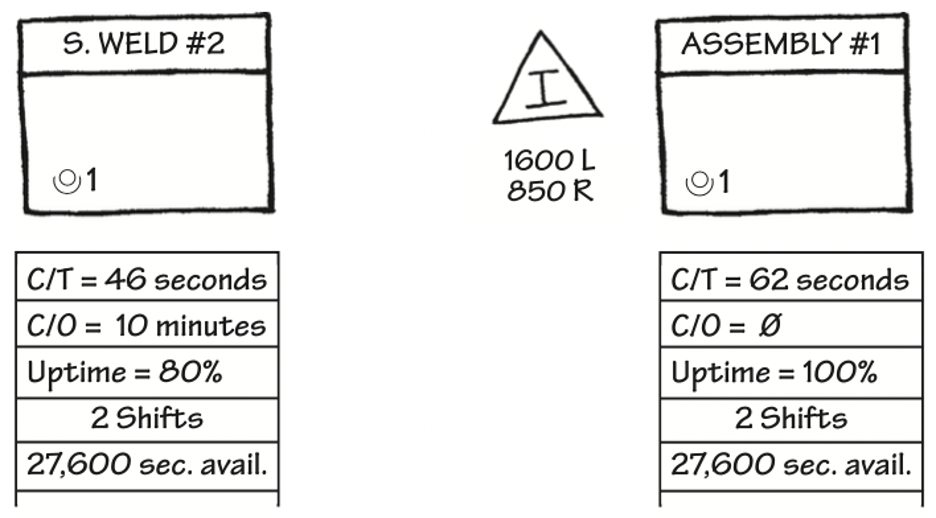
A Closer Look at Process Data
An example of process data boxes in a value stream map shows the type of detail that value-stream mapping captures.
Value Stream Mapping Icons
Using standardized icons, such as those shown below, for each action depicted on a value-stream map ensures that everyone can “read” them. Download these value-stream mapping icons.
Continue your learning with our go-at-your-own-pace, On Demand Online Course: Learning to See Using Value Stream Mapping, faithfully based on the innovative content in the landmark Learning to See workbook that introduced value-stream mapping to the world.
Learning to See Using
Value-Stream Mapping
Develop a blueprint of improvements that will achieve your organization’s strategic objectives.
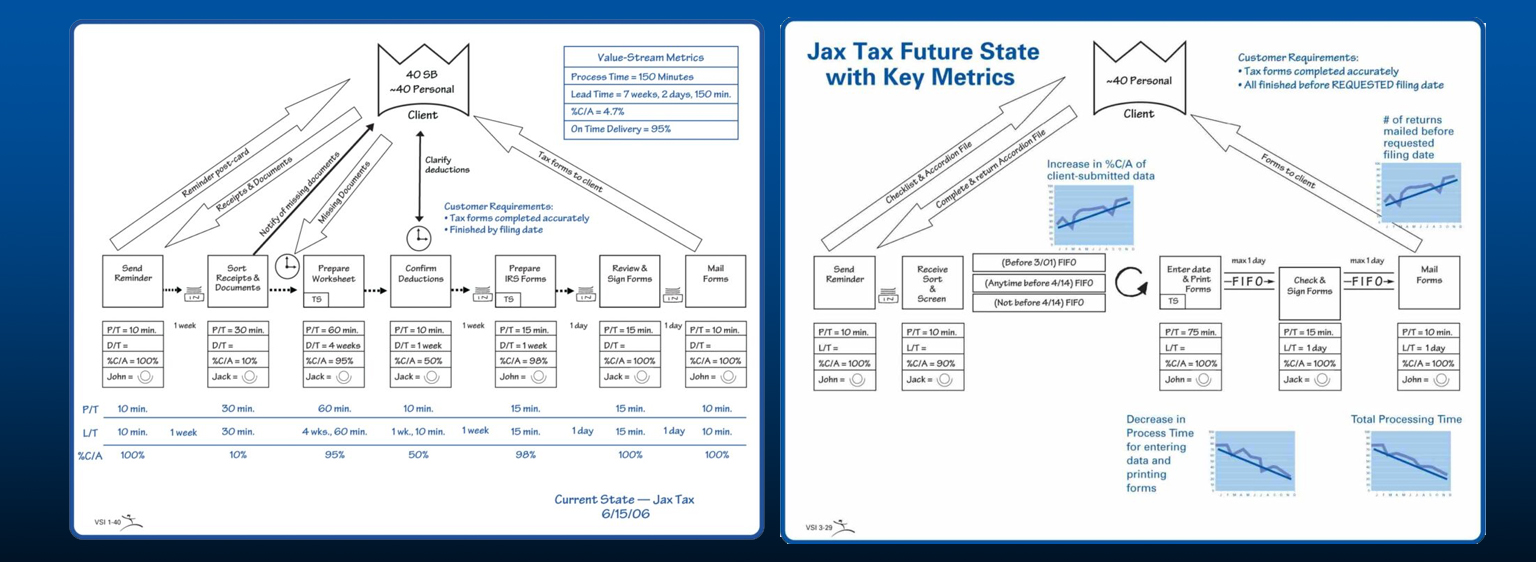
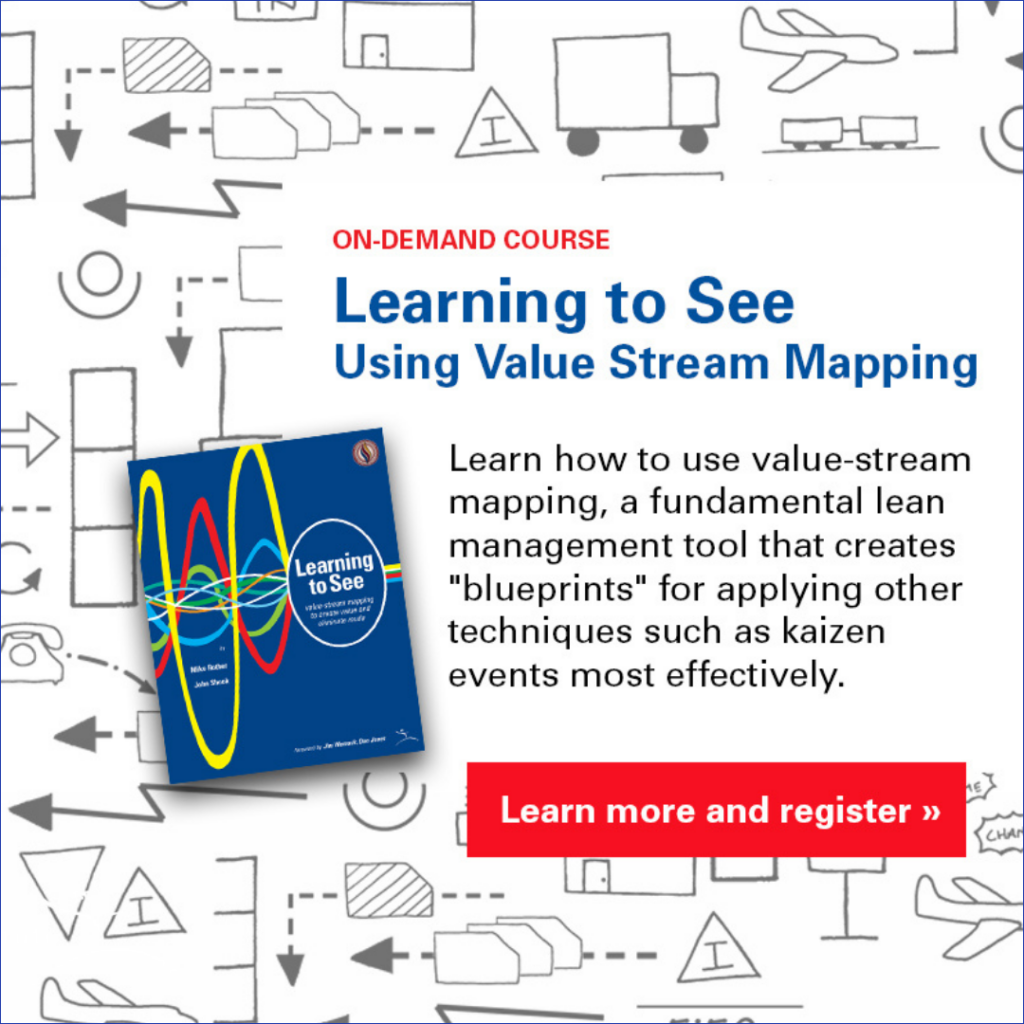
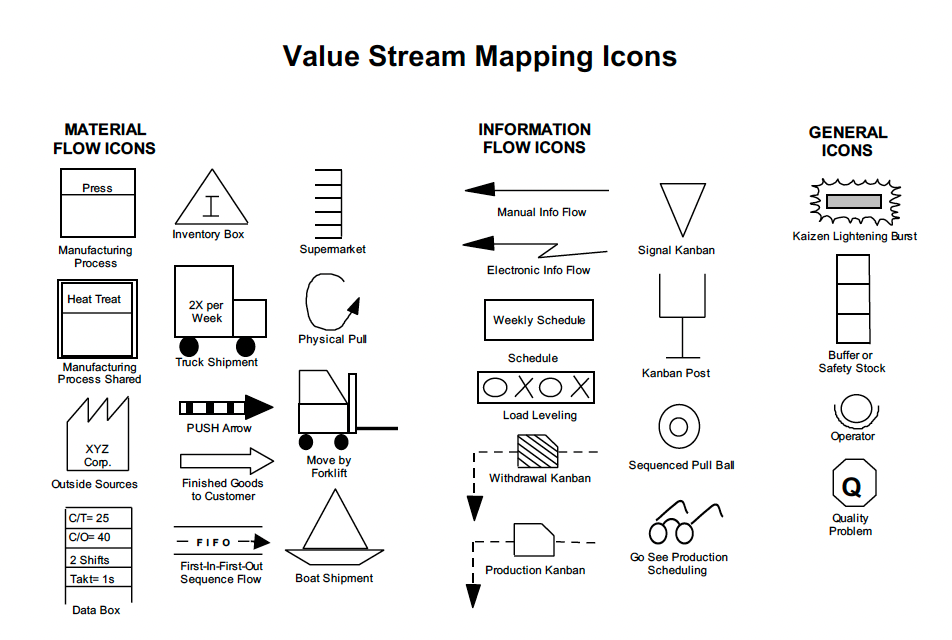





The what why when section appears misaligned. It seems that it should be a table because different items refer to VSM or process making.
If there is no vsm , there is no real, steady improvement.
Thank you for this overview!
The ad which is placed in the text promoting the “Learning to see” on demand course, does not seem to be linked to any target. Maybe you want to update this.
Best,
Andreas
I fixed it. Thanks for the heads-up.